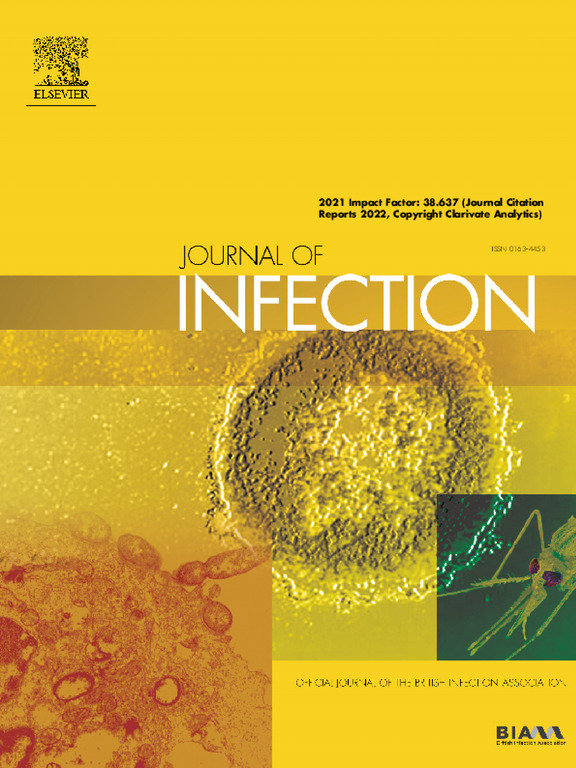Understanding the effectiveness of the Comirnaty monovalent and bivalent vaccines during the Winter Coronavirus (COVID-19) Infection Study
IF 14.3
1区 医学
Q1 INFECTIOUS DISEASES
引用次数: 0
Abstract
Background
Understanding the effectiveness of SARS-CoV-2 vaccines over time is critical for informing booster strategies, vaccine types, and public health policies, particularly with the continued emergence of novel SARS-CoV-2 variants.
Methods
The Winter Coronavirus (COVID-19) Infection Study (WCIS), conducted from November 2023 to March 2024, involved approximately 150,000 participants aged 3 years and older from England and Scotland. The WCIS tested participants at regular intervals for SARS-CoV-2 using lateral flow tests to estimate prevalence and incidence in near real-time. Survival analysis using Cox proportional hazards regression was conducted, using WCIS data linked to participant vaccination records, to evaluate the association between time since vaccination and the risk of SARS-CoV-2 infection and symptomatic infection. Vaccine effectiveness (VE) was evaluated for the Comirnaty Omicron XBB.1.5 and Comirnaty Omicron BA.5 vaccines for those aged 65 years old and over. The model incorporated time-varying covariates within the counting process framework, stratified baseline hazards by age group, region, and time, and included key covariates such as sex, clinical risk status, ethnicity, and socioeconomic indicators. VE was estimated from hazard ratios, and penalised cubic splines were used to capture the nonlinear effects of time since vaccination.
Results
We estimated that the VE for the Comirnaty Omicron XBB.1.5 vaccine peaked at day 14 post-vaccination, reaching 70.63% (95% Confidence Intervals (CI): 43.33%, 84.78%) against infection and 63.62% (95% CI: 22.69%, 82.88%) against symptomatic infection. VE declined rapidly and by approximately weeks 9–12 post vaccination, the VE point estimates were close to zero with considerable uncertainty in the estimates from day 60 onwards. In contrast, the Comirnaty Omicron BA.5 bivalent vaccine showed little evidence of effectiveness within the study period, with VE estimates close to zero and wide confidence intervals crossing zero.
Conclusions
These findings provide important insights into the effectiveness of targeted vaccine strategies in the context of an evolving pandemic. As SARS-CoV-2 continues to mutate, adaptive approaches in vaccine design and public health policy will be key to addressing emerging variants and protecting high-risk groups.
了解单价和二价疫苗在冬季冠状病毒(COVID-19)感染调查中的有效性。
背景:随着时间的推移,了解SARS-CoV-2疫苗的有效性对于制定加强策略、疫苗类型和公共卫生政策至关重要,特别是在新型SARS-CoV-2变体不断出现的情况下。方法:冬季冠状病毒(COVID-19)感染研究(WCIS)于2023年11月至2024年3月进行,涉及来自英格兰和苏格兰的约150,000名3岁及以上的参与者。WCIS使用侧流测试定期对参与者进行SARS-CoV-2测试,以近乎实时地估计患病率和发病率。使用与参与者疫苗接种记录相关的WCIS数据,使用Cox比例风险回归进行生存分析,以评估接种疫苗时间与SARS-CoV-2感染风险和症状性感染之间的关系。对65岁及以上人群使用的comnity Omicron XBB.1.5和comnity Omicron BA.5疫苗进行了疫苗有效性(VE)评价。该模型在计数过程框架中纳入时变协变量,按年龄组、地区和时间分层基线危险,并包括关键协变量,如性别、临床风险状况、种族和社会经济指标。VE由风险比估计,惩罚三次样条用于捕获接种疫苗后时间的非线性效应。结果:我们估计,Comirnaty Omicron XBB.1.5疫苗的VE在接种后第14天达到峰值,对感染的VE达到70.63%(95%置信区间(CI): 43.33%, 84.78%),对症状感染的VE达到63.62% (95% CI: 22.69%, 82.88%)。疫苗接种后大约9-12周,疫苗接种点估计接近于零,从第60天开始的估计有相当大的不确定性。相比之下,Comirnaty Omicron BA.5双价疫苗在研究期间没有显示出有效性的证据,VE估计值接近于零,宽置信区间超过零。结论:这些发现为在不断演变的大流行背景下靶向疫苗策略的有效性提供了重要见解。随着SARS-CoV-2的持续变异,疫苗设计和公共卫生政策中的适应性方法将是应对新出现的变体和保护高危人群的关键。
本文章由计算机程序翻译,如有差异,请以英文原文为准。
求助全文
约1分钟内获得全文
求助全文
来源期刊

Journal of Infection
医学-传染病学
CiteScore
45.90
自引率
3.20%
发文量
475
审稿时长
16 days
期刊介绍:
The Journal of Infection publishes original papers on all aspects of infection - clinical, microbiological and epidemiological. The Journal seeks to bring together knowledge from all specialties involved in infection research and clinical practice, and present the best work in the ever-changing field of infection.
Each issue brings you Editorials that describe current or controversial topics of interest, high quality Reviews to keep you in touch with the latest developments in specific fields of interest, an Epidemiology section reporting studies in the hospital and the general community, and a lively correspondence section.
 求助内容:
求助内容: 应助结果提醒方式:
应助结果提醒方式:


